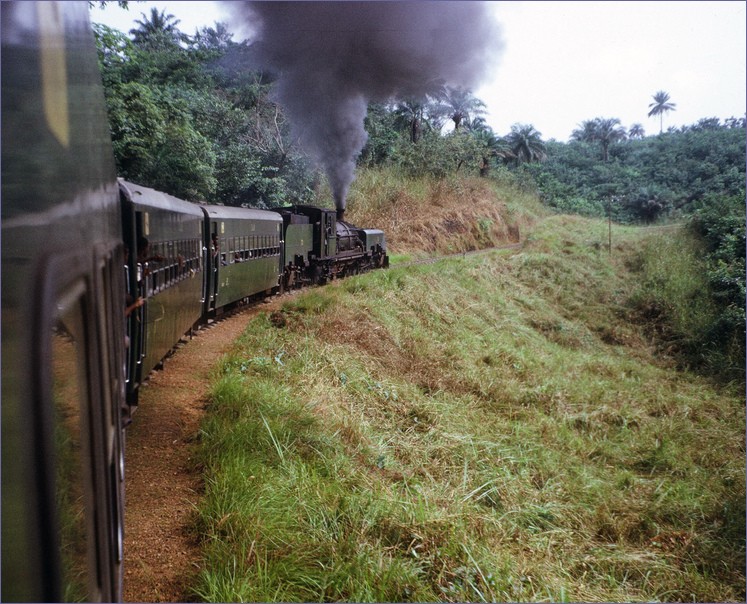Almost all railways in Sierra Leone were closed in the mid-1970s after a recommendation from the UN special fund due to the costs. Currently, there is an only one operational railway line in the country. The line between the port of Pepel and the Marampa iron ore mine was 84 kilometers long. In the second decade of the 21st century, the railway line was upgraded and extended to new iron ore mine in Tonkolili – currently total length of the line is 135 km long (or 197 km – I cannot verify).
In January 2023 Pepel Port and Pepel-Tonkolili Railway Development, Expansion and Management Lease Agreement between the Government of Sierra Leone and ARISE Integrated Industrial Platform Ltd (ARISE IIP) was signed. The railway line is used for freight transport only but the ARISE company plans to launch the passenger train between Port Loko district and Tonkolili via Bombali.
There are plans to build a new standard-gauge railway line between proposed port Tagrin Point and proposed iron ore mine in Kasafoni.
Railways in Sierra Leone – history
The railway in Sierra Leone was built in colonial times, at the end of the 19th century. There are discrepancies in sources. Probably in 1895 the Sierra Leone Government Railway was founded, a year later the construction of the first section of the railway began. The first section from Freetown to Wellington (11 km) was was put into operation in 1897.
Further sections of the railway from Freetown to the east of the country were opened over the next decade, until in 1907 trains reached the town of Pendembu, near the border with Liberia. The Freetown – Pendembu line was 336 kilometers long.
In addition, two branches were built:
Freetown – Hill Station (8.9 km)(1903)
Bauya Junction – Makeni (135 km)(1914)
The branch to Makeni was extended to Kambai (approx. 32 km), but the section to Kamai was operated for a very short time. The extension was closed after a few years and dismantled in 1930.
The Freetown – Hill Station section was closed in 1929. The line connecting the center of Freetown with the district of wealthy Europeans located on a hill was unable to compete with road transport.
During World War II, the lines were mainly used to transport troops and weapons.
In the 1950s, the lines operated by the Sierra Leone Government Railway were rehabilitated. Rolling stock fleet was replaced with diesel locomotives and 155 freight wagons. In 1961, Sierra Leone gained independence. The country received 45 new carriages as a gift from Great Britain.
In the 1960s, the growing number of cars caused a gradual decline in rail transport, and all railway lines were closed at the turn of the decade and in the 1970s. In 1974, the era of the Sierra Leone Government Railway officially ended.
A few ex-Sierra Leonean wagons and locomotives can be seen on narrow gauge railways in the UK.
Sierra Leone National Railway Museum
In 2005, just after the end of the civil war, the National Railway Museum was officially opened in Cline Town, a suburb of Freetown, the capital of Sierra Leone. The museum is located in an old railway workshop where, much of the Sierra Leone Government Railway’s rolling stock survived intact the bloody civil war.
It is a small museum. The remains of the Sierra Leone government railways are on display, i.e. diesel and steam locomotives, passenger carriages and hundreds of photographs and documents related to the history of railways in Sierra Leone.
Related articles:
